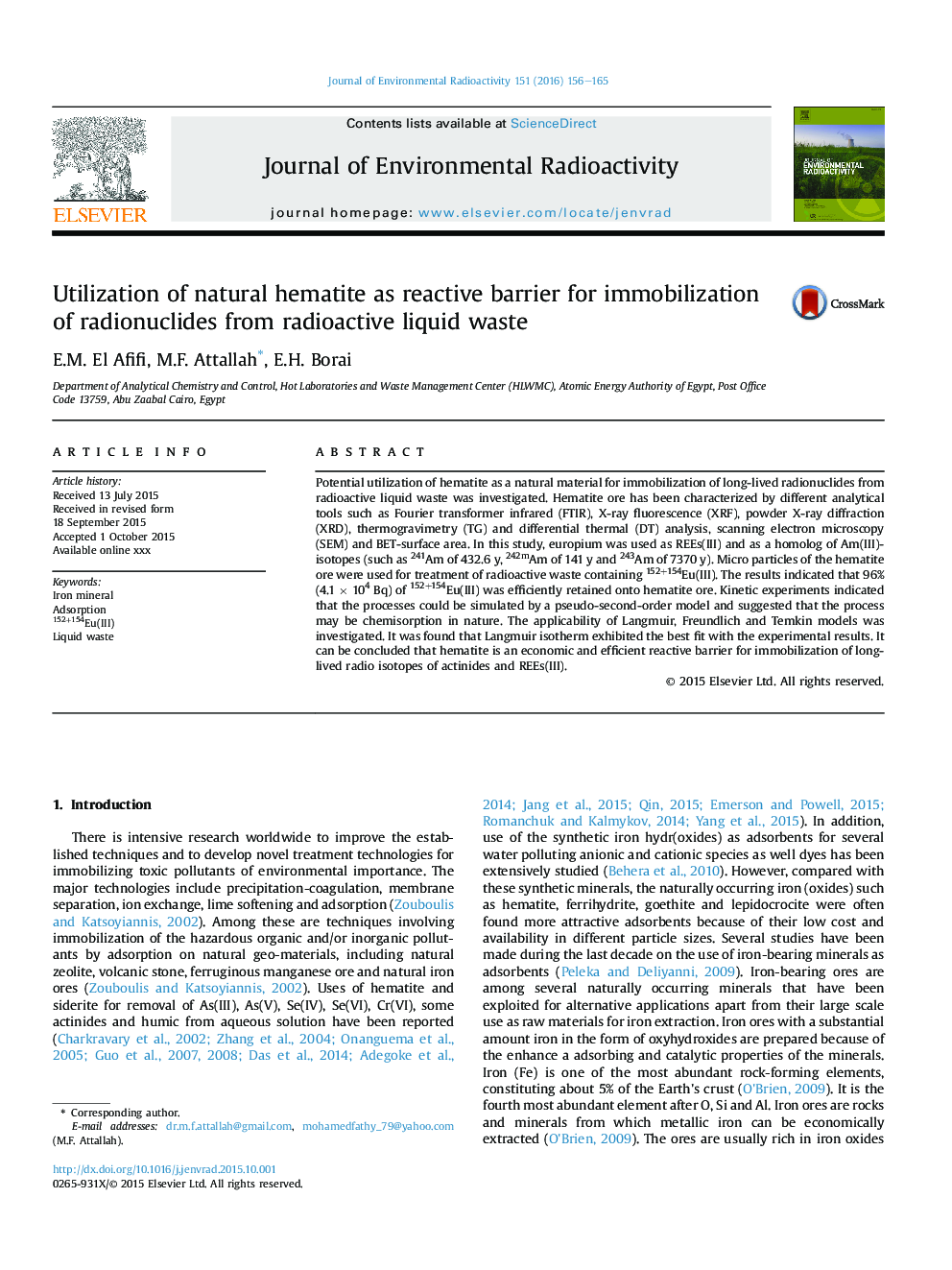| Article ID | Journal | Published Year | Pages | File Type |
|---|---|---|---|---|
| 10686597 | Journal of Environmental Radioactivity | 2016 | 10 Pages |
Abstract
Potential utilization of hematite as a natural material for immobilization of long-lived radionuclides from radioactive liquid waste was investigated. Hematite ore has been characterized by different analytical tools such as Fourier transformer infrared (FTIR), X-ray fluorescence (XRF), powder X-ray diffraction (XRD), thermogravimetry (TG) and differential thermal (DT) analysis, scanning electron microscopy (SEM) and BET-surface area. In this study, europium was used as REEs(III) and as a homolog of Am(III)-isotopes (such as 241Am of 432.6 y, 242mAm of 141Â y and 243Am of 7370Â y). Micro particles of the hematite ore were used for treatment of radioactive waste containing 152+154Eu(III). The results indicated that 96% (4.1Â ÃÂ 104 Bq) of 152+154Eu(III) was efficiently retained onto hematite ore. Kinetic experiments indicated that the processes could be simulated by a pseudo-second-order model and suggested that the process may be chemisorption in nature. The applicability of Langmuir, Freundlich and Temkin models was investigated. It was found that Langmuir isotherm exhibited the best fit with the experimental results. It can be concluded that hematite is an economic and efficient reactive barrier for immobilization of long-lived radio isotopes of actinides and REEs(III).
Keywords
Related Topics
Physical Sciences and Engineering
Energy
Nuclear Energy and Engineering
Authors
E.M. El Afifi, M.F. Attallah, E.H. Borai,
